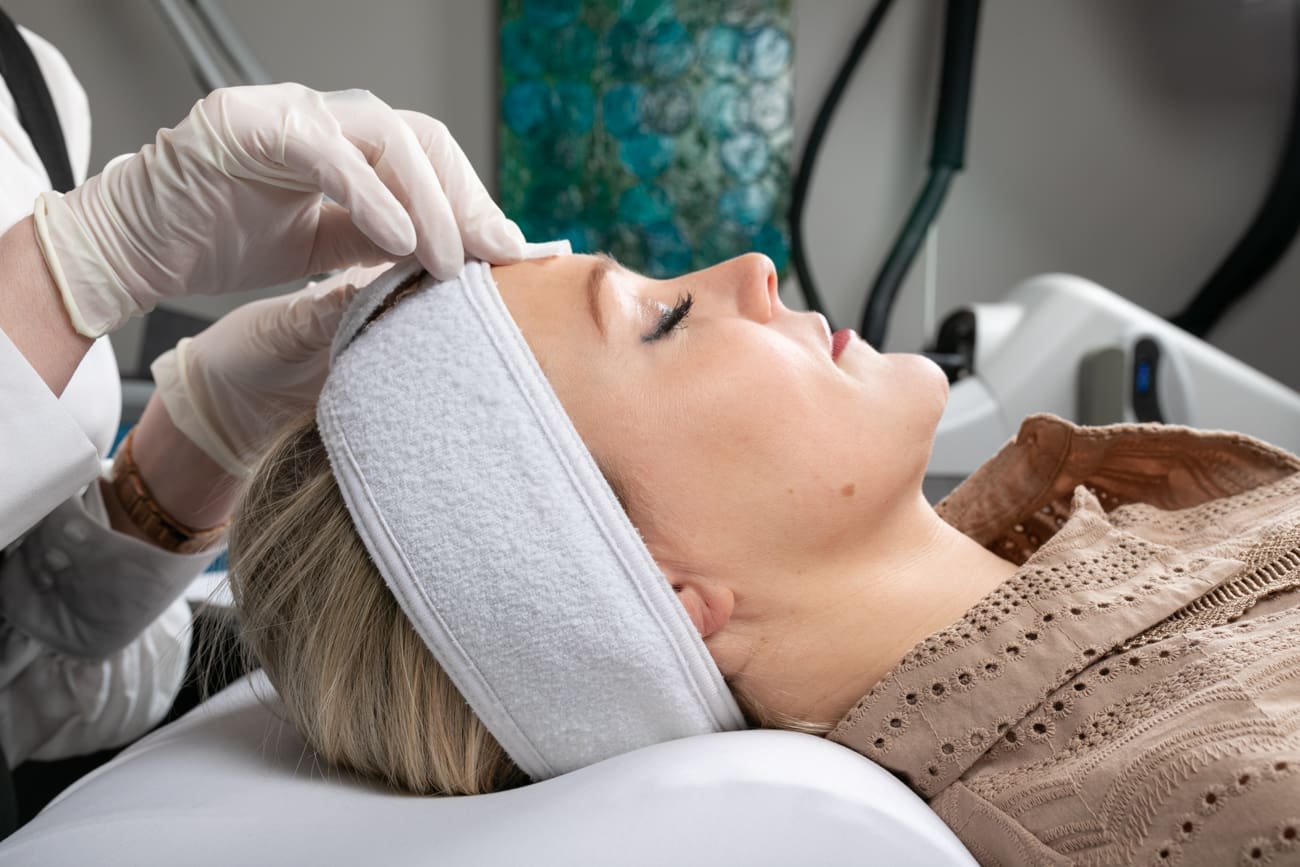Fall for Chemical Peels: Chemical Peel Benefits
If achieving flawless, glowing, and healthy skin is on your fall to-do list: Chemical peels may be for you! These medical-grade facial treatments have minimal downtime and are safe for all skin types. They are the perfect choice for skin maintenance or even addressing skin concerns. This includes: acne, acne scarring, brown spots, pores, or texture. Mona Dermatology aesthetic providers, Kylee Finn, RN and Amanda Schmidt, LME, break down the science behind chemical peel treatments and answer your top questions about chemical peel benefits.
How do chemical peels work?
Kylee, RN: Chemical peels use the applications of various chemicals, such as alpha-hydroxy acid or salicylic acid. This causes the top layers of your skin to shed over a short period of time. During the appointment, your provider will apply multiple layers of the chemical peel solution onto your skin. These solutions consist of retinol, and different types of acids to raise the acidity of the skin. When you change the acidity of the skin it causes the skin to start to exfoliate, causing your peeling. The peeling of the skin promotes rejuvenation of healthy skin cells. This allows new, fresh skin to be revealed after the peeling.
Will I “peel”?
Amanda, LME: There are different levels of chemical peels such as superficial, medium depth or deeper peels that cause more layers of skin to peel. Your provider will help choose the best peel for you. This depends on the severity of your skin condition, what type of skin condition you want to treat, and how sensitive your skin is. Chemical peels can range from gentler treatments that will refresh your skin and cause no peeling at all to deeper peels that can improve more advanced concerns.
What can a chemical peel treat?
Chemical peels treat many different skin conditions such as sun damage, hyperpigmentation, melasma, acne, acne scarring, and other concerns. There are many benefits to a chemical peel making it versatile.
Sun Damage:
Chemical peels can address the visible signs of aging caused by sun damage. This can be done by, increasing the turnover of skin cells and promoting collagen production. Common concerns include superficial lines and wrinkles, uneven skin tone, brown spots, and more. In addition to addressing these cosmetic concerns, some chemical peels can also help to exfoliate actinic keratosis. These precancerous lesions develop in the epidermis of your skin as a result of sun exposure. Overtime, this has the potential to develop into skin cancer.
Hyperpigmentation:
A chemical peel helps exfoliate the skin, which reveals fresh and youthful skin underneath. In addition to boosting your collagen production, a chemical peel can also help exfoliate sun-induced brown spots as well as hyperpigmentation from various conditions such as acne scarring and melasma. By addressing these key causes of hyperpigmentation, chemical peels help even out and benefit your skin tone over time.
Melasma
Melasma is often triggered by hormone changes in the body which cause an overproduction of pigment in the superficial layers of the skin. A chemical peel can help increase your skin cell turnover, and exfoliate brown patches without causing heat-induced inflammation that can actually trigger melasma. Therefore, chemical peels are a great way to decrease the visible signs of Melasma.
Acne & Acne Scarring:
By promoting the shedding of skin and reproduction of skin cells, chemical peels can help heal acne breakouts quicker and prevent them from becoming inflamed. It can also help fade the leftover red pigment caused by acne, called post-inflammatory hyperpigmentation, and some types of acne scarring. In addition, salicylic acid peels are a great way to help treat active acne as well as acne scarring.
Fine Lines & Wrinkles:
if you’re seeking a no-needles way to soften superficial wrinkles and fine lines, a chemical peel may be a great option. By increasing cell turnover and boosting collagen production, a series of chemical peel treatments can help lessen the appearance of wrinkles over time. For deeper wrinkles, other treatments such as Botox or lasers may be a better choice.
Rosacea
Some lighter chemical peels contain mandelic acid, which can help calm inflammation. As a result, this can decrease the redness in your skin from rosacea. Chemical peels may not be the best choice for all patients experiencing rosacea. Your provider will help you choose what products and treatments are right for you.
Click the video below to read more about this customizable treatment!


